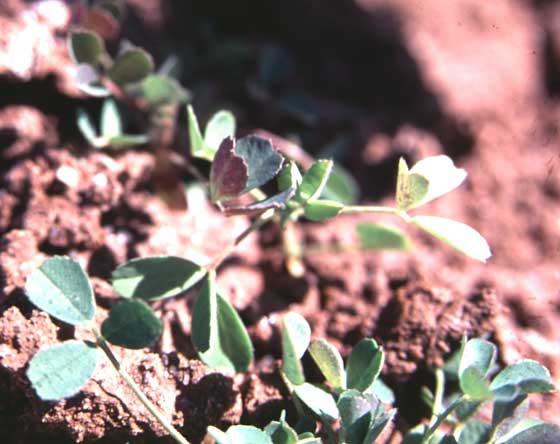dbltree
Super Moderator
Re: Alfalfa - Results of using Select Herbicide
<div class="ubbcode-block"><div class="ubbcode-header">Originally Posted By: huntyak</div><div class="ubbcode-body">We mowed about 1 wk ago so I'll hit those fields this Wednesday. So if the field is 5 acres, add about 7-8 oz of select to the 1 gallon drum and use it all per acre. Do this 5x over the entire field and it should nuke it? Thanks. </div></div>
Here's the deal with any spraying regardless if it is a one gallon or a 1000 gallons....
You must know how many gallons of water you are applying per acre??? It's impossible to determine any application rates without knowing that.
You really need to calibrate your sprayer and know who much a gallon of spray will cover. I believe we have calibration links in the herbicide thread or...just put in a 1/2 gallon of water and see how far it goes??
43,560 sq ft in an acre so how much to do 435 sq feet for example?
You need need to know how many acres that 1 or 5 or 15 gallon sprayer will cover and then we can figure out exactly how much product to mix with it.
My 2 1/2 gallon backpack sprayer at a steady walk will cover about an acre....makes for easy figurin' /forum/images/%%GRAEMLIN_URL%%/grin.gif
2 1/2 gallons. 8 ounces of Select, (shot of crop oil /forum/images/%%GRAEMLIN_URL%%/wink.gif )and one acres worth of "hoofin" it!
My field sprayer in first gear, high range (using Alice) puts on 20 gallons of water per acre, so speed makes a big difference in amount of water and hence, product per acre.
If your one gallon sprayer will in fact cover one acre then your good to go but that seems a little iffy??
Makin' any sense?? /forum/images/%%GRAEMLIN_URL%%/smile.gif
<div class="ubbcode-block"><div class="ubbcode-header">Originally Posted By: huntyak</div><div class="ubbcode-body">We mowed about 1 wk ago so I'll hit those fields this Wednesday. So if the field is 5 acres, add about 7-8 oz of select to the 1 gallon drum and use it all per acre. Do this 5x over the entire field and it should nuke it? Thanks. </div></div>
Here's the deal with any spraying regardless if it is a one gallon or a 1000 gallons....
You must know how many gallons of water you are applying per acre??? It's impossible to determine any application rates without knowing that.
You really need to calibrate your sprayer and know who much a gallon of spray will cover. I believe we have calibration links in the herbicide thread or...just put in a 1/2 gallon of water and see how far it goes??
43,560 sq ft in an acre so how much to do 435 sq feet for example?
You need need to know how many acres that 1 or 5 or 15 gallon sprayer will cover and then we can figure out exactly how much product to mix with it.
My 2 1/2 gallon backpack sprayer at a steady walk will cover about an acre....makes for easy figurin' /forum/images/%%GRAEMLIN_URL%%/grin.gif
2 1/2 gallons. 8 ounces of Select, (shot of crop oil /forum/images/%%GRAEMLIN_URL%%/wink.gif )and one acres worth of "hoofin" it!
My field sprayer in first gear, high range (using Alice) puts on 20 gallons of water per acre, so speed makes a big difference in amount of water and hence, product per acre.
If your one gallon sprayer will in fact cover one acre then your good to go but that seems a little iffy??
Makin' any sense?? /forum/images/%%GRAEMLIN_URL%%/smile.gif























